Having been a potter in my younger days, I often seek out traditional ceramics when I travel. Not to be confused with Incheon, the city with the major airport serving Seoul, South Korea, the town of Icheon is known as a pottery center and is about an hour southeast of Seoul. The area came to be known as a producer of traditional pottery during the Joseon dynasty (1392-1910) and its heyday lasted for about 500 years. Today there are about eighty operating pottery houses.
The main street in Icheon was crammed with pottery shops, wares spread out before open doors: tall grain pots and round-bellied kimchee pots of dark brown clay, sparsely glazed with a brushed decoration if at all.
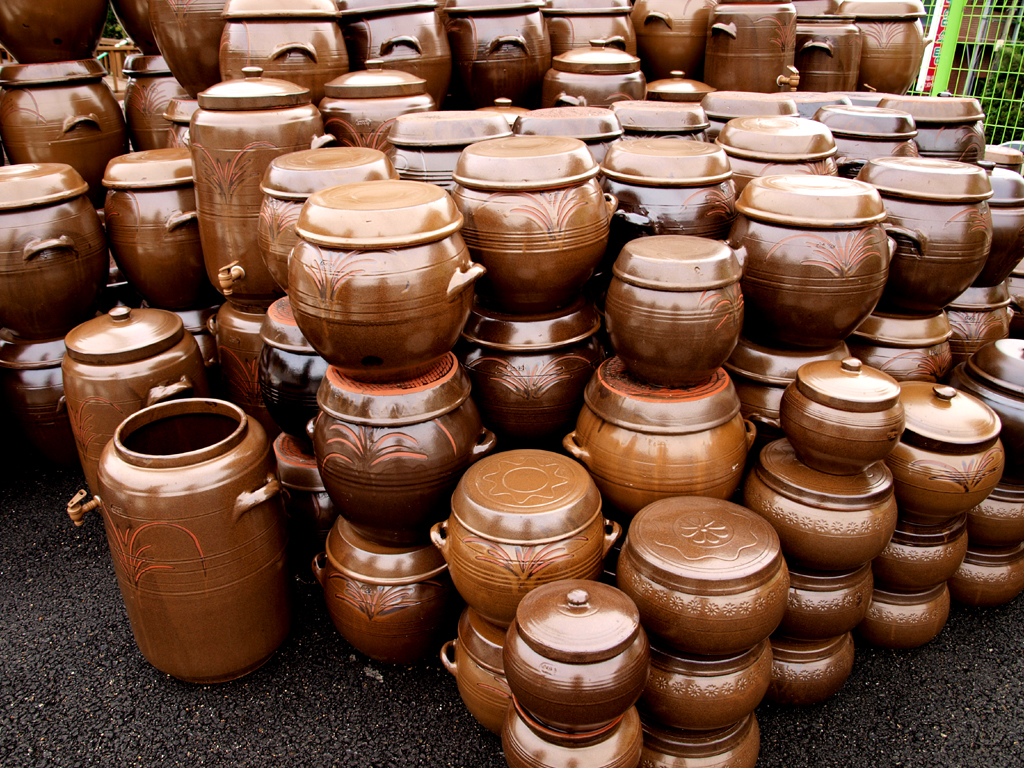
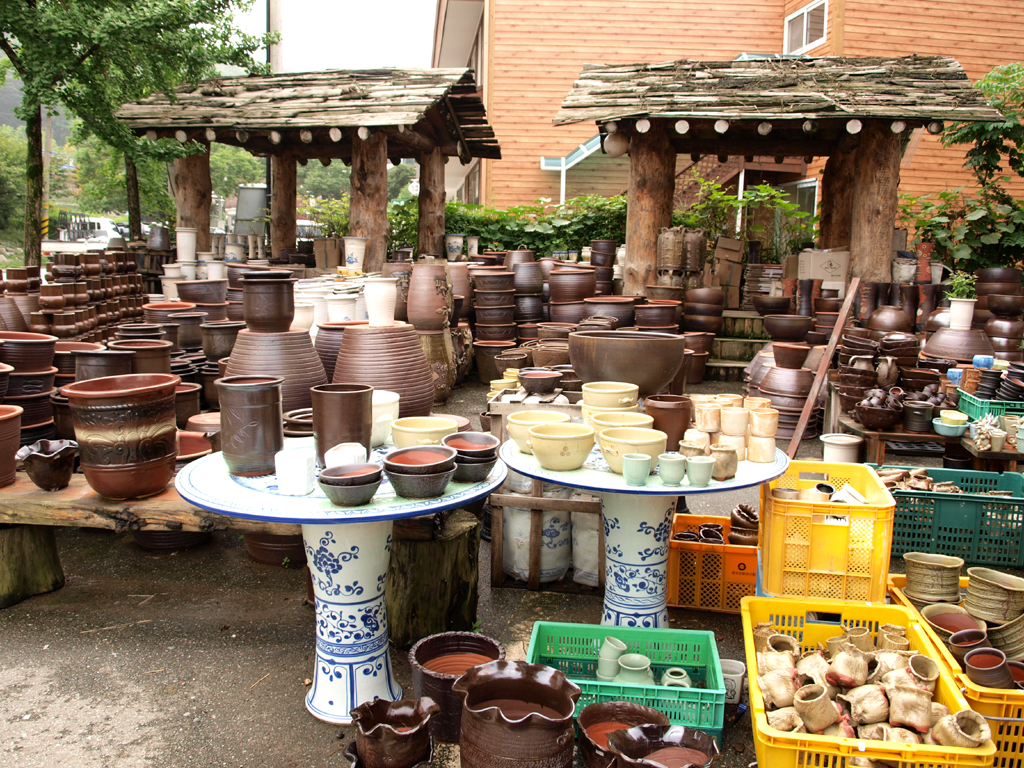
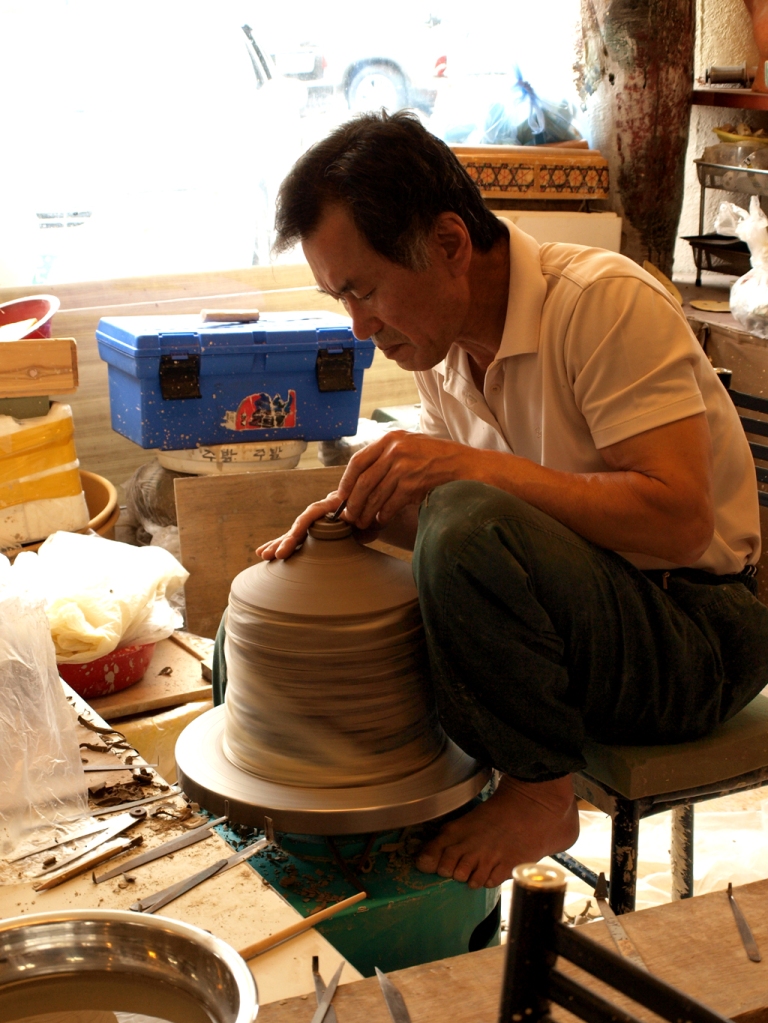

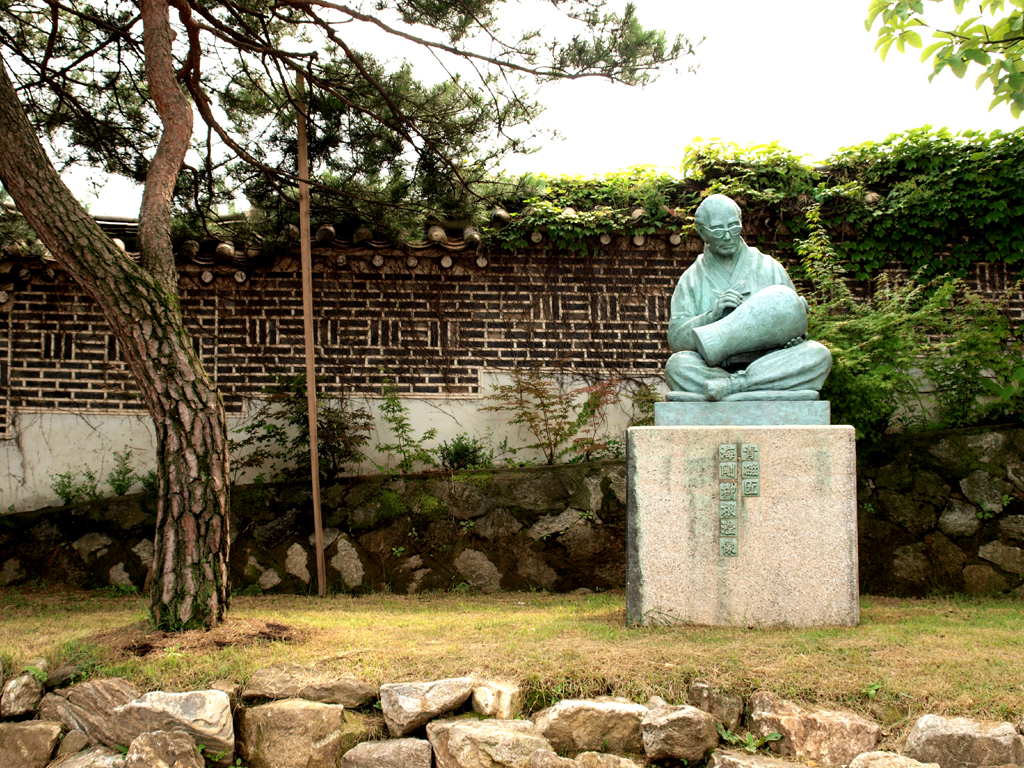

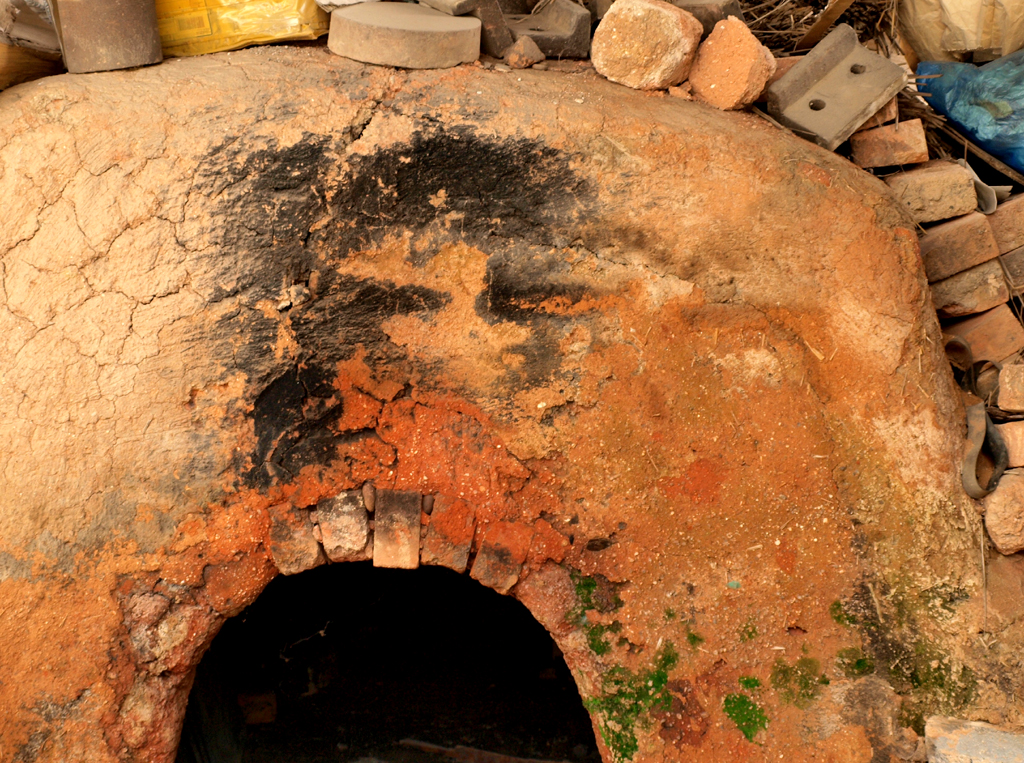
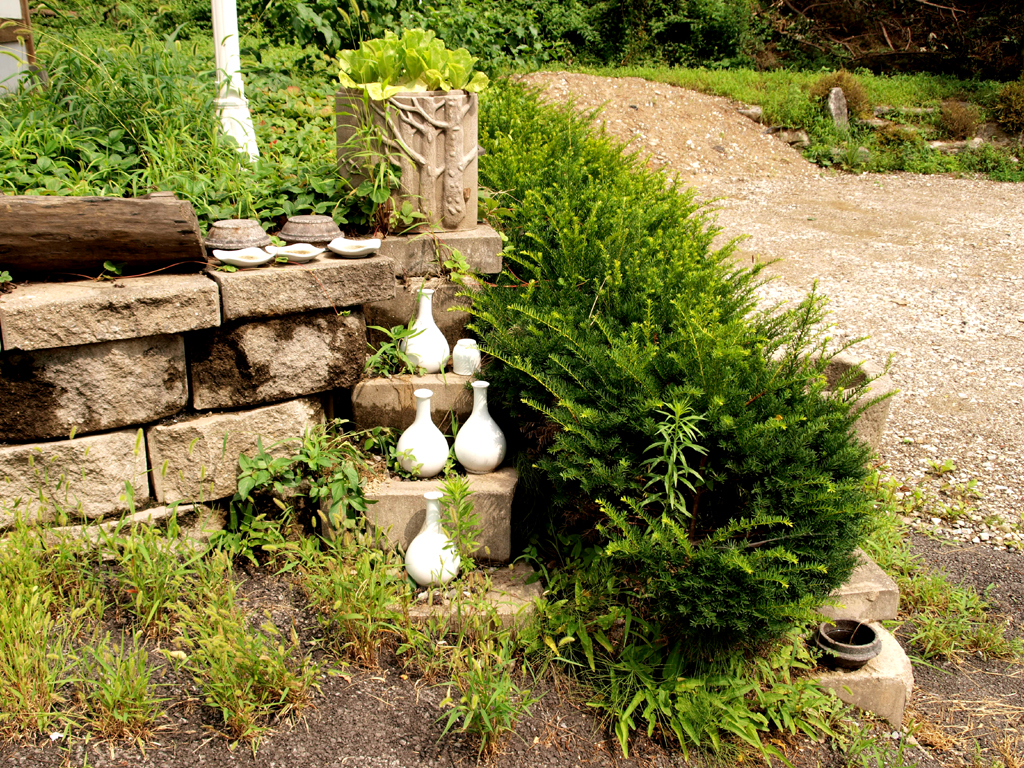

Among these folk pots, painted pots, and more modern art creations were the celadon pots I sought. An art form recently resurrected from old times, the cloudy pale green glaze has a delicately crackled surface.

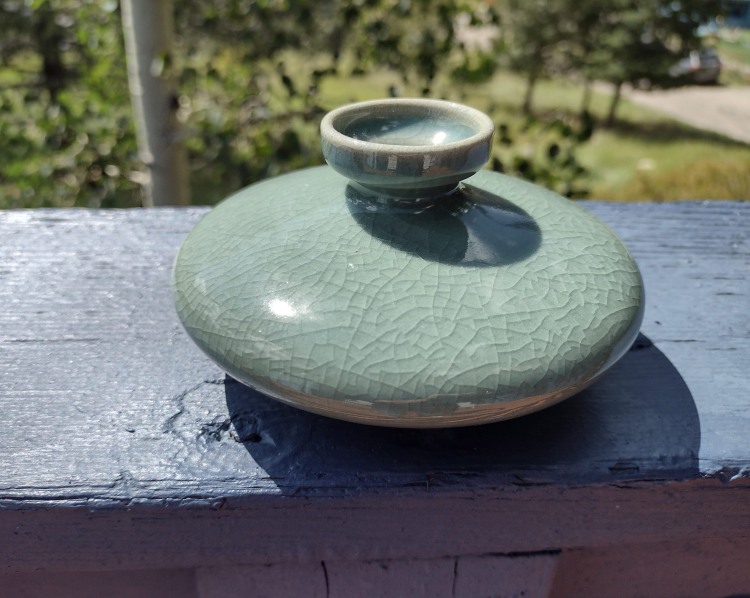
And, of course, a lunch of many small dishes and a few other memorable images.


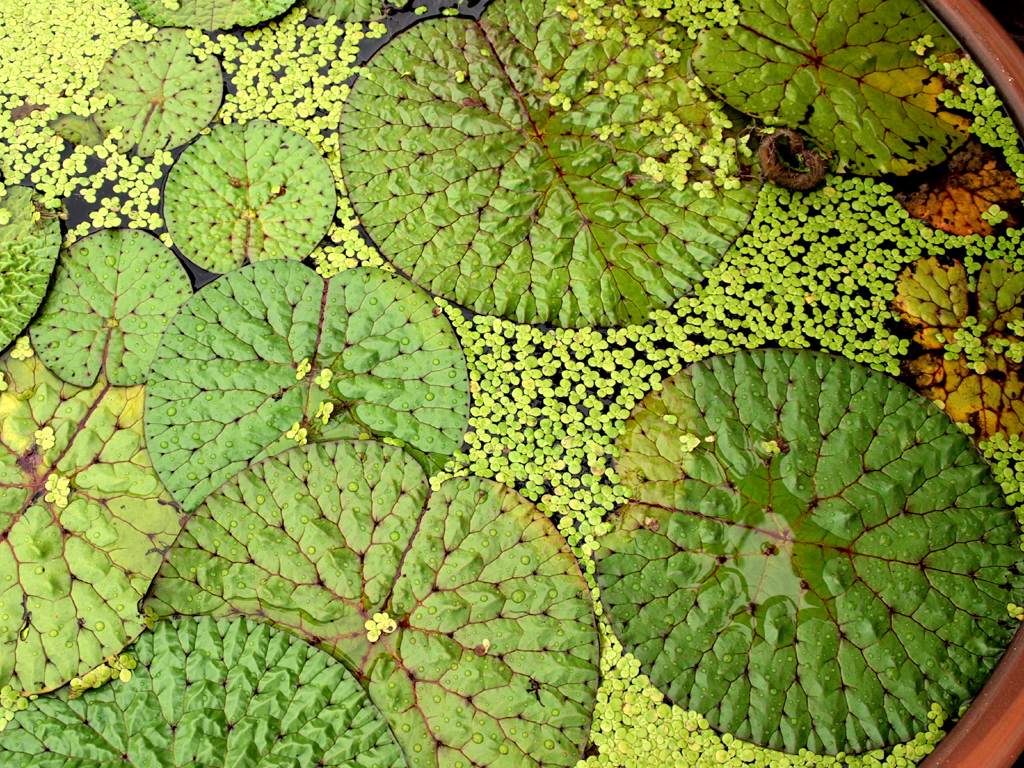
Other posts in South Korea: The soul of Seoul, busy Busan, ancient GyeongJu.
Please do not download or reproduce images from this site. ©
Your comments are welcome!
Popular posts/stats/categories
Email me at: Ruth@RuthRosenfeld.com

Every picture tells a story in this enchanting remembrance 🏺
LikeLiked by 1 person
Every pot is lovingly formed by an artisan and has withstood the fires. Thanks.
LikeLike
True artistry in natural elements. Thanks for sharing Ruth. Allan
LikeLiked by 1 person
Thanks for reading, Allan. Expert craftsmanship. I am always drawn to these artisans.
LikeLiked by 1 person
Wonderful handmade pottery 🙂
LikeLiked by 1 person
So many different styles. I enjoying seeing a few potters that let visitors into their studio.
LikeLike
Speaking of pottery: I went to the Philadelphia Museum Of Art two days ago. One gallery had a number of painted ceramic plates and bowls from Italy. They were made in the 1500s and are very beautiful.
LikeLiked by 1 person
That sounds like a great exhibit. I would be afraid to handle pottery that old.
LikeLiked by 1 person
Truly beautiful 😊. I especially like the Celadon pottery. Have also seen a few in the National Museum in Seoul
LikeLiked by 1 person
They do have a special beauty. Thanks
LikeLike
Careers that come with seeing the ending result of work are slowly becoming rare, and that’s why I love pottery. The beauty of hand-thrown dishware and vases are the imperfections that distinguish each special piece 🤗 thanks for sharing and have a good day ☺️
LikeLiked by 1 person
Yes, handmade pieces usually do have some imperfection, the mark of the potter. With mass produced goods so plentiful and cheap, these works are artforms. Thank you.
LikeLiked by 1 person
Lovely pictures, I especially love the pottery fountain. The attention to detail and high-degree of patience is incredible.
LikeLiked by 1 person
Thank you! The patience, the slow pace of making pottery, is part of its draw, almost like a meditation. And the timing of trimming the pot when not quite dry, and having enough pots to fill a kiln to schedule a firing, is all part of the production process, even for an amateur potter. You have to love it if you do it.
LikeLiked by 1 person
I love your little celadon pot! I’m reminded of the beautiful13th century Koryo celadon vase decorated with cranes that I saw in the historical museum in Kaesong. Our UK guide told me that a friend of his, an expert in ceramics, had estimated its value at c £2M, but it was displayed in the simplest of glass cases with no apparent security around it!
LikeLiked by 1 person
The crane vase sounds beautiful. You don’t usually see a celadon glaze with other decorations. Glad to know North Korea is still treasuring its history and arts. I often pick up pottery, not big pieces or expensive, when I travel. I have one small plate from Japan with brush strokes that look like grain that’s the most expensive (you wouldn’t guess it), but I fell in love with it.
LikeLiked by 1 person
Wow, I just searched it and they are stunning!
LikeLiked by 1 person
Glad you found it – I was about to point you towards a photo! I bought a small oval plate from an art shop in Pyongyang in a similar design, just to remind me of that vase 🙂 I must write a post about that museum some time soon!
LikeLiked by 1 person
Looking forward to it!
LikeLiked by 1 person
They are wonderful!
LikeLiked by 1 person
Yes, they are! Thank you, Luisa.
LikeLiked by 1 person
🙏❤🙏❤🙏
LikeLiked by 1 person
I can see why you would go there. That celadon pottery is absolutely beautiful. Your post reminded me of pottery towns, or neighbourhoods, in India, and Cambodia. And of a man hand-crafting a Hittite jug in Turkey.
Alison
LikeLiked by 1 person
It’s an ancient craft, all over the world. Glad it brought back memories for you.
LikeLiked by 1 person
Despite your warning about the name, my brain REALLY wanted to add an “n” to Icheon as I was reading your post. Beautiful pots. I like kimchee, but not enough to eat as much as those kimchee pots would hold. Sheesh!
LikeLiked by 1 person
I imagine those pots would go to restaurants. That is an awful lot of kimchee!
LikeLiked by 1 person
I like the look of the Kimchee pots at the start of your post, but your Celadon pot certainly is lovely!
LikeLiked by 1 person
The dark brown pots have a warmth to the glaze, very earthy, the celadon light and delicate. Thanks for reading and your comment!
LikeLiked by 1 person
Wow that pottery is amazing! I’d want to buy everything, then be too afraid about how I was going to get it home…..it’s great to see such a beautiful local art form though 🙂
LikeLiked by 1 person
You’ll notice my pot was quite small. It’s hard to resist, but whatever I buy has to fit in a carry-on shopping bag (breakables). Thanks!
LikeLike
Beautiful pottery always makes my heart beat a little faster. I wish I could get my hands on a couple of kimchi pots to bury in the backyard. Thanks for sharing the photos, Ruth.
LikeLiked by 1 person
That’s the way to do it! Thank you for visiting and your comment, Tracy.
LikeLiked by 1 person
Welcome.
LikeLike
The celadon pot would’ve been my choice as well (at least from the photos here). Beautiful piece! Never seen the cracked-finish look before, nor the particular shade of green. You give us another reason to visit South Korea someday.
LikeLiked by 2 people
The celadon glaze is an ancient art and tradition. I chose a very small one, but it’s a little treasure!
LikeLike
Wow amazing Korean Pottery ..
LikeLiked by 1 person
Wow! So beautiful stylish handmade pots. Thank you for sharing ☺️😊🌷😊!
LikeLiked by 1 person
Thanks for visiting and your comment!
LikeLike
😊💞💗❣️❤️🌷👏💓💐My pleasure. God bless you 🙂☺️🙂
LikeLike